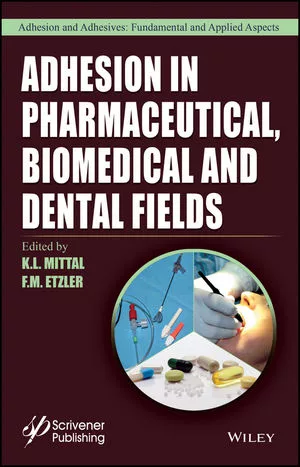Nanomaterials in the Workplace
Where do adhesives and sealants manufacturers’ responsibilities lie when nanomaterials are used in the production process?

In a recent survey, the UK’s National Chemical Emergency Centre (NCEC) asked its clients and stakeholders whether they or their employees were concerned of the risk that nanomaterials may pose to their workforce. Almost a quarter of responders to the question replied that they were.
Today, engineered or incidental nanoparticles are present throughout industrial, pharmaceutical and consumer products, and they are produced in a range of manufacturing processes. However, the impact of nanomaterials on human health remains unknown; no regulations specifically apply to health and safety in nanomaterial handling. What can adhesives and sealants manufacturers do to reduce the risk to their stakeholders and safeguard business continuity?
Performing a Practical Risk Assessment
Although no regulations directly cover the handling of nanomaterials in the workplace, they are covered in a wide range of EU legislation, meaning businesses have a legal obligation to account for their presence in the workplace. These include the Framework Directive 89/391/EEC, which concerns the occupational health and safety of workers, and REACH and CLP legislation. To summarize, if the nanomaterials being used or generated are thought to be hazardous, then employers are obliged to eliminate or reduce risk through prevention measures wherever possible.
Many companies tackle the uncertainty of long-term nanomaterial exposure head on by implementing workplace management strategies that protect worker health and fulfil corporate duty of care responsibilities. However, many challenges arise in developing these processes. The first is practical: Few companies have the technology to identify emission sources and exposure levels. Internal air quality is an emerging concern for businesses, and teams are actively supporting the development of testing methodologies and standards in this area.
The second challenge comes from knowing how to interpret this data in a way that provides a realistic assessment of workplace risk. While testing strategies and methods of risk assessment have been harmonized for industrial chemicals, no consensus exists on risk assessments for nanomaterials. Many legislators around the world are working to bring guidance for nanomaterials to the same level. For example, work is being done to support the European Commission by developing inventories and classifications for nanomaterials and their effects on the environment. However, knowledge on the behavior of nanomaterials in the workplace, products and the environment remains limited.
Almost all research into human exposure or inhalation is performed in vitro, making it hard to predict actual toxicology. Work for the European Commission has broken new ground by developing the first nanomaterial inventory for Europe, including emissions during manufacture, use and disposal of products containing nanomaterials. Understanding workplace and environmental releases will form the starting point for evaluations of risk to the workforce and the wider public and environment.
Adhesives and sealants manufacturers should use a combination of methods to reduce the impact of nanomaterials on their workforce. This includes implementing engineering and administrative controls such as ventilated work spaces and spill response stations to tackle exposure. However, due to the size of nanomaterials, conventional safety precautions such as air filters or personal protective equipment may not be appropriate. Latex gloves, for example, might resist penetration of bulk chemicals but not nanosized materials.
Ultimately, the nature of a material’s production or handling process itself will impact the level of risk, so it will never be possible to have a “one-size-fits-all” approach to risk assessments. That is where a detailed understanding of releases, exposure, and risk can pay dividends for businesses manufacturing and using nanomaterials.
Monitoring and Measuring Nanoparticles
Many companies that are involved in nanomaterials R&D, as well as those that produce nanoparticles indirectly through production, cleaning or polishing processes, are already implementing detailed risk management strategies to protect the safety of their employees. Without official guidance on how to monitor or measure nanomaterials, however, delivering best practice in occupational safety is a complex process.
Even what constitutes a nanoparticle remains a contentious topic, although the most widely accepted definition is “a natural, incidental or manufactured material containing particles, in an unbound state or as an aggregate or as an agglomerate and where, for 50% or more of the particles in the number size distribution, one or more external dimensions is in the size range 1 nm - 100 nm.”1 It is the physical properties of particles in this size range, such as the size distribution, shape, morphology and particle number concentration, that are responsible for their novel behavior and advanced functionality. However, these same properties make it extremely difficult to predict how airborne engineered nanomaterials, or those generated during industrial or manufacturing processes, will behave on exposure or inhalation—particularly as their behavior in vivo can bear little relation to the bulk chemical form.
Testing for the presence of nanomaterials in work environments is the first step to understanding and mitigating the risk of exposure to employees and stakeholders. Currently, no consensus exists on the most appropriate metric or methods to measure airborne nanomaterials in the workplace. That means companies need to individually identify appropriate sampling, measuring and monitoring methods that determine exposure in a way that is relevant to their processes.
When a team carries out sampling and analysis, the focus should be on measuring not only the presence of nanomaterials in the environment, but the quantities, airborne concentrations, particle number and physical features that affect behavior. This typically requires a multivariate approach, using a range of analytical techniques and instruments to produce comprehensive particle mapping. Methods for measuring and monitoring nanomaterials in the workplace include:
- Measurement at a single location to provide time-based data to help identify high concentration events correlated with local activity via observations or video recordings
- Measurement at multiple locations simultaneously with multiple counters (previously characterized in-house to establish equivalent performance) to help identify high concentration events and investigate their repercussions elsewhere
- Measurement with a mobile counter coupled to a GPS system and/or video recording system to help identify spacial variations in concentrations and identify particle sources
Staying Compliant and Scanning the Horizon
Regulation 6 of Control of Substances Hazardous to Health (COSHH) regulations in the UK places a requirement on employers to carry out a risk assessment for work that may expose employees to potentially hazardous substances. Companies handling nanomaterials are therefore obliged to ensure that any members of their workforce that face exposure have sufficient “information, instruction and training” to avoid risks to their health.
Employers must be trained to understand the risks of nanomaterial exposure and be able to keep these as low as is reasonably practicable. In practice, this requires workers to generate COSHH assessments for nanomaterial handling and for businesses to include hazards and appropriate measures on material safety data sheets. Although health surveillance of nanomaterial exposure is not required under COSHH regulations, employers should strongly consider implementing a monitoring program in instances where health effects are suspected.
The data on the health effects of chemical substances must be included on classification and labelling documents. Work for the European Commission has highlighted the importance of classification, labeling and packaging (CLP) regulations, as well as the challenges in effective implementation for nanomaterials. Nanomaterials and their bulk counterparts may be chemically identical but require different labelling. In principle, a substance identified by the chemical abstracts services (CAS) number can have different classifications and labelling depending on the specific properties expressed, including particle size. Therefore, the properties of a nanomaterial that are different from the bulk should be reflected in the classification and labelling. Effective implementation of CLP regulations has knock-on effects in other regulatory areas, such as waste management.
Although no direct legislation is currently in effect, manufacturers handling nanomaterials must comply with overriding requirements to any user of potentially hazardous materials. Companies that choose not to take action face a number of legal risks and financial costs of non-compliance. External support and training with a trusted expert on nanomaterial safety is an effective way to mitigate this risk and deliver the highest quality of care.
After the Nano-Rush
The nanomaterials industry is maturing at a rapid pace, and both industry and regulators are rapidly developing strategies to keep pace. Over the next few years, national and international legislators will begin to develop a rigorous regulatory architecture for nanomaterial use. Ongoing development in advanced materials may combine chemical, biological and other properties with activity at the nanoscale.
For adhesives and sealants manufacturers with corporate responsibility and duty-of-care commitments, action on nanomaterial safety should start immediately. This requires a continuous lifecycle approach to nanomaterial safety, beginning with emissions monitoring and continuing with process optimization and comprehensive employee training. Only through this process will manufacturers, and the entire industry, ensure that commercial nanomaterials have a platform to thrive. ASI
For additional information, email caroline.raine@ricardo.com or visit www.ricardo.com.
Reference
1. European Commission recommendation on the definition of nanomaterial, October 18, 2011, http://eur-lex.europa.eu/legal-content/EN/TXT/?uri=CELEX%3A32011H0696.
Risk Assessment at a Glance
- If nanomaterials being used are thought to be hazardous, then businesses have a legal obligation to account for the presence of hazardous substances in their workplaces.
- Businesses should identify emissions sources and exposure levels and perform a realistic assessment of workplace risk.
- This information can be used to determine appropriate steps to tackle exposure.
- The nature of a material’s production or handling process will impact the level of risk; there will never be a “one-size-fits-all” approach.
Looking for a reprint of this article?
From high-res PDFs to custom plaques, order your copy today!



.webp?height=200&t=1710891121&width=200)
.webp?height=200&t=1713197356&width=200)

